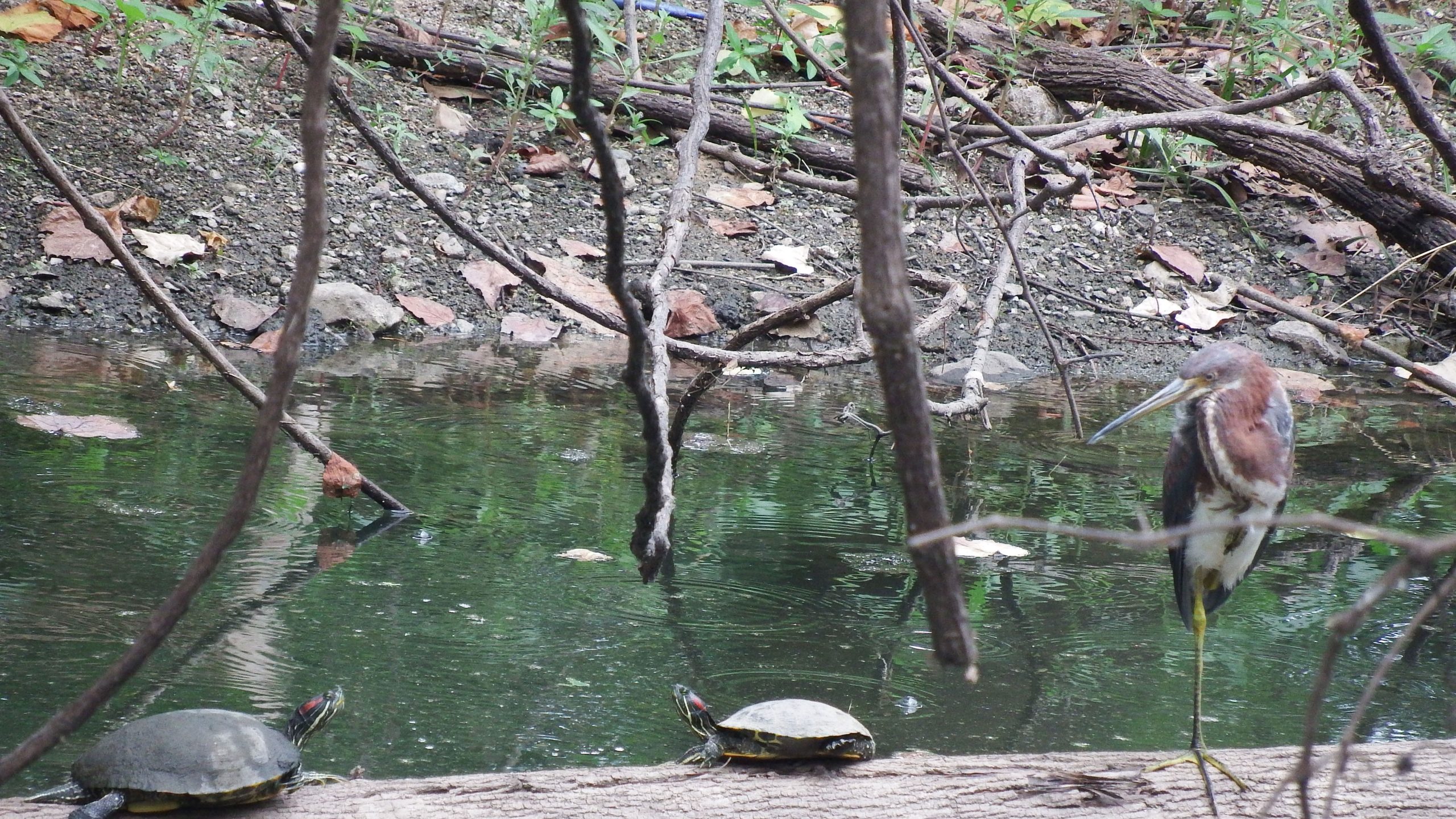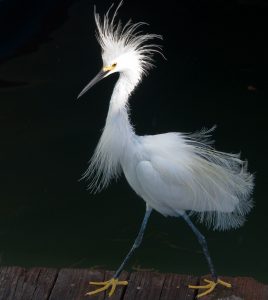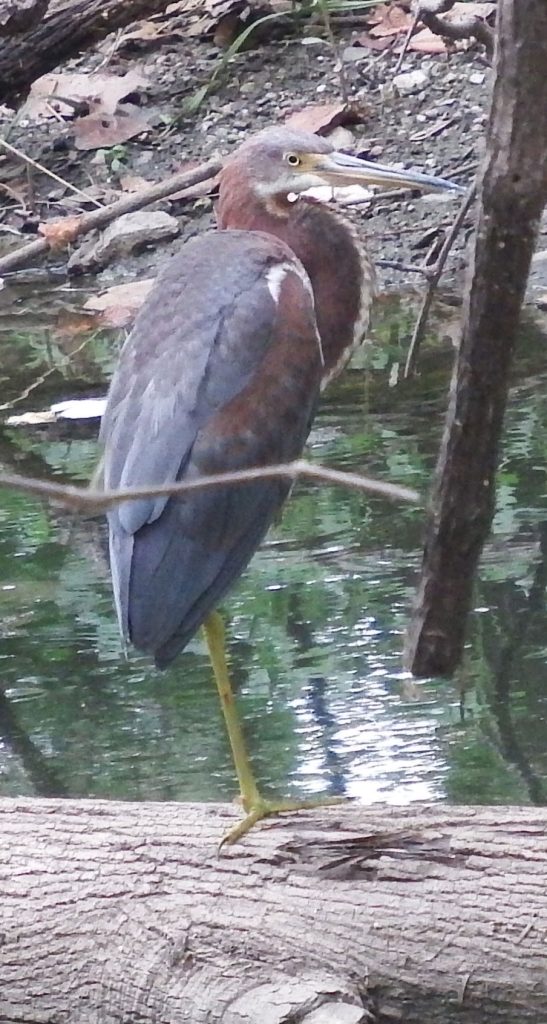So what is a heron, anyway?
 I am yet again going to write about herons. Do not blame me. Blame the juvenile Tricolored Heron that was standing, almost invisible, in the run-out of the McGovern Cascade.
I am yet again going to write about herons. Do not blame me. Blame the juvenile Tricolored Heron that was standing, almost invisible, in the run-out of the McGovern Cascade.
She was so well camouflaged that I noticed her only because I wanted a better look at two turtles with whom she shared the log (that’s her to the right above). This is the first Tricolored Heron I have ever seen in the Park. They are not rare, but they aren’t plentiful, either.
With that tricolor, I thought I had seen every heron in North America in Buffalo Bayou Park, which got me wondering about what makes a heron a heron (besides the word “heron” in its name). When you get right down to it, all those egrets look exactly like herons.
I did a bit of research. The Latin name for the heron family is Ardeidae, while the Latin name for the egret family is … Ardeidae.
Egrets are herons.
So, why on earth, if we know darned well they are the same family, do we refer to this bunch over here as herons and that bunch over there as egrets. A little more research turned up the fact that, we get the name egret from the French word aigrette which means “plume feather.”

This amazing photo of a Snowy Egret in full breeding plumage was taken by Jason Engman and posted to Wikipedia.
This made me mad because one thing that I know about egrets is that the Snowy Egret was rendered almost extinct in the late 1800’s because their feathers were so prized for women’s hats. At one point, Snowy Egret feathers were worth twice their weight in gold. We hunted them nearly to extinction until one of the first conservation movements formed around saving this lovely bird.
And now, I learn that the whole damned group of them were named after the thing that got them killed: their feathers. Egrets are those herons whose white feathers (aigrettes) we desired for ourselves. The ones whose feathers we didn’t crave stayed herons. It wasn’t their normal feathers that almost doomed them. It was the special feathers they grow during breeding season.

This is a juvenile tricolor. The give away is the rusty neck color. An adult Tricolored Heron has a slate-grey neck.
I recently ran into a quote from Maimonides, a brilliant and revered 12th-century rabbi. Sometime around the year 1200, he wrote: “It should not be believed that all beings exist for the sake of the existence of man. On the contrary, all the other beings too have been intended for their own sakes and not for the sake of anything else.”
If we knew this back then, why don’t we have Passenger Pigeons today? So numerous they darkened the sky with their passage, they went extinct at about the same time we organized to save Snowy Egrets. Passenger Pigeons were tasty and easy to catch. It took us less than a century of commercial hunting to wipe them out.
When I started this blog, I promised myself that I would not preach. A juvenile Tricolored Heron pushed me to break that promise. As an apology, I offer you a few minutes of a tricolor doing tricolor things in Buffalo Bayou Park. Unlike the herons that hunt by standing still, tricolors hunt by darting here and there, stabbing the water for fish. I decided not to mute the audio just because I caught myself geeking out over a heron.

